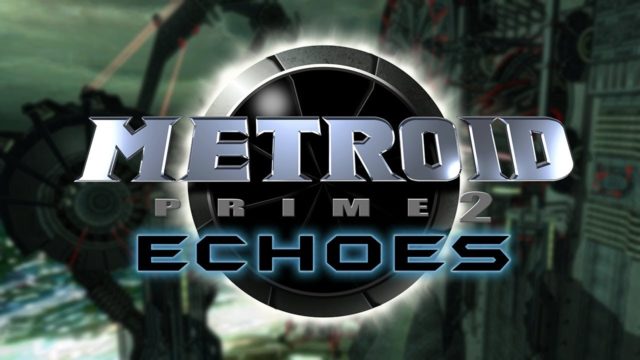
So we’ve covered how Metroid Prime 2 has some notable design flaws, but what does the game do right? A lot, actually. It wasn’t a critical darling without reason, after all. To start with, the art direction is amazing. This is a game that came out nearly fifteen years ago and yet feels every bit as contemporary as any other title on the stands today. The overworld flows organically from one section to the next. Some set pieces are enormous and grand, whereas others are smaller and more intimate. The opening of the game does a fabulous job of establishing what players can expect to see on their journey. The initial trek through the Galactic Federation troopers’ twisting base feels narrow and confining, up until the point that Samus spills out into the G.F.M.C. Compound and takes in the sight of the landing area and the enormous G.F.S. Tyr. The whole sequence remains an exhilarating rush.
Perhaps one of the most visually impressive locations in the game is the Sanctuary Fortress. It’s an enormous tower of shining Luminoth technology that breaks from the more harmonious mix of nature and science that is glimpsed in the game up to that point. The interior of the structure is a maze of light, metal, and machinery that offers a brief glimpse at what the Luminoth were capable of before their war with the Ing. It’s also fascinating to soak in because one can see snippets of what was to come in the visual design of Metroid Prime 3: Corruption. Aether and Dark Aether are risky places to travel, but there are so many sights to enjoy while there it’s almost impossible to not get sucked into these worlds.
Interestingly, Retro Studios moved away from the traditional beam weaponry of previous Metroids by instituting Light and Dark variants that depend on ammunition to be fired. There’s an undeniable rush to plotting out attacks while taking into consideration how close to being depleted a given beam is. The new artillery does lack some of the visual flair of Samus’ ordinance in the first Metroid Prime, but the versatility of these arms is every bit as interesting and inventive as their predecessors. Throw in an improved (albeit still slightly twitchy) lock-on system, and combat is kinetic, snappy, and potent. It’s amazing to think that Retro was able to implement a control scheme on a dual-analogue controller that relegated aiming and movement to a single stick… and it still somehow worked! Metroid Prime 3 and Prime Trilogy on Wii demonstrated how well a second input for aiming can work within the confines of these games, but returning to the original control scheme in no way feels restricting.
One thing that designers spend a lot of time considering is how “empowered” the player feels throughout a game. Metroid is reminiscent of manga like One Piece and Dragon Ball in that the hero in series like those always begins at a very base level in terms of power or strength. As the story progresses, they beef up and become more and more powerful. The Metroidvania formula is firmly rooted in this very basic manga trope. In Metroid Prime 2, Samus starts out utterly outmatched by the Ing, but by the time she’s rocking the Light Armor and touting all the different beams and bombs the game has to offer, the sense of empowerment becomes astronomical. Samus tears through the Ing and Space Pirates like so much fluff once she’s peaked at the end of the game. There’s also something really, really satisfying about reading scan data where the Space Pirates talk about being scared of Samus. It’s not every game that players get to hear how frightened the enemy is of the main character!
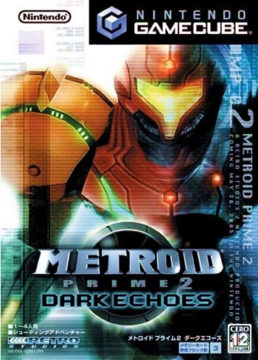
Speaking of scan data, the amount of lore in Metroid Prime 2 is insane. Aether and Dark Aether already come across as fully-fledged worlds, but the veritable encyclopedia of information to read via scanning brings a whole new layer to both planets and their inhabitants. So much of the material is completely arbitrary, too. It’s possible to play the game and scan only the bare essentials, yet the team at Retro put in the effort to fill every inch of the environment with data for the inquisitive player to harvest and enjoy. While there is indeed a stronger focus on narrative in Metroid Prime 2, like the first game, anyone who avoids scanning is going to miss out on a ton of ancillary details that truly enrich the experience.
So it plays great, looks great, sounds great… but there’s one, last ingredient here that tips Metroid Prime 2 over the top. That ingredient is Samus herself. Yoshio Sakamoto might have made Samus, but if anyone truly gets her, it’s Retro Studios. Samus is an unrelenting machine of a hero. Nothing fazes this woman. It doesn’t matter the number of enemies, the size, the ferocity— it’s all trivial to her. So great is Samus’ bravery, that some of the G.F. troops are in awe of her (SPC M. Angseth: “She’d be out there taking care of business”), while others are so stunned by the legends surrounding her they can’t believe them (PFC I. Crany: “I just find it hard to believe that one person took out an entire Space Pirate base”). Samus is as cool as they come, even at the end when the Luminoth, with Aether and their people saved, gather to bid her farewell, she only offers them a wave in response.
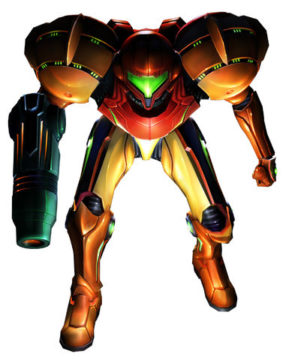
As someone who’s played the Metroid Prime series from the beginning, I must admit that this return to Metroid Prime 2 was a genuine blast. It was great to see the risks that Retro Studios took with this sequel; they could have played it safe and delivered a barely-altered upgrade of Metroid Prime and likely gotten away with it. Instead, the developer went in many different directions to try something new. Metroid Prime 2 isn’t quite the revolution that the first game was, but it is nonetheless a stunning achievement all its own. It has some quirks, but overall this is a masterclass in game design and anyone who hasn’t played it should make an effort to do so. The original version is always preferable, but remember that Metroid Prime Trilogy on Wii has all three games and includes motion controls for the original two for the first time. However you play it… make it happen!
The Bonus Disc
Before I leave you, I just wanted to highlight this little oddity that is the Metroid Prime 2: Echoes Bonus Disc. It was available in a handful of different ways:
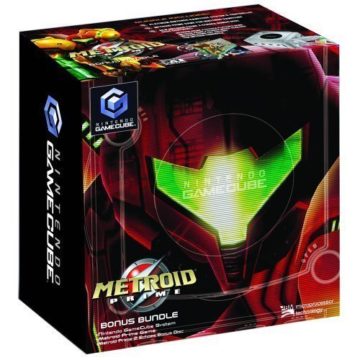
- To Nintendo.com users who registered enough software
- Bundled with later copies of Metroid Prime
- Sold inside a special Metroid Prime GameCube bundle
The disc has what one would expect, which is a demo of Metroid Prime 2. There are twelve rooms from the finished game to explore, but they’ve been repositioned for this demo. Samus can use both the Light and Dark Beams as she makes her way around this remix of the opening segment of the game. There are differences in regards to some of the scan data, but otherwise this is a fun insight into the game before it released to the public.
That’s not all though! Here’s what else you can find on the Bonus Disc:
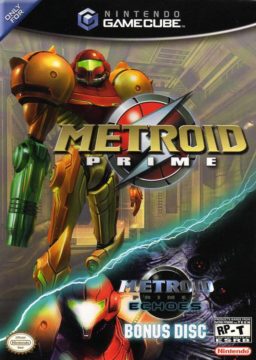
- Metroid Chronicle: a database that showed off all of the games in the series up to that point.
- Metroid Prime concept art gallery
- Metroid Prime 2 concept art gallery
- Trailers
It’s a fun addition to any Metroid fan’s collection. I’d definitely recommend hunting a copy down if you can!




 ShareThis
ShareThis





